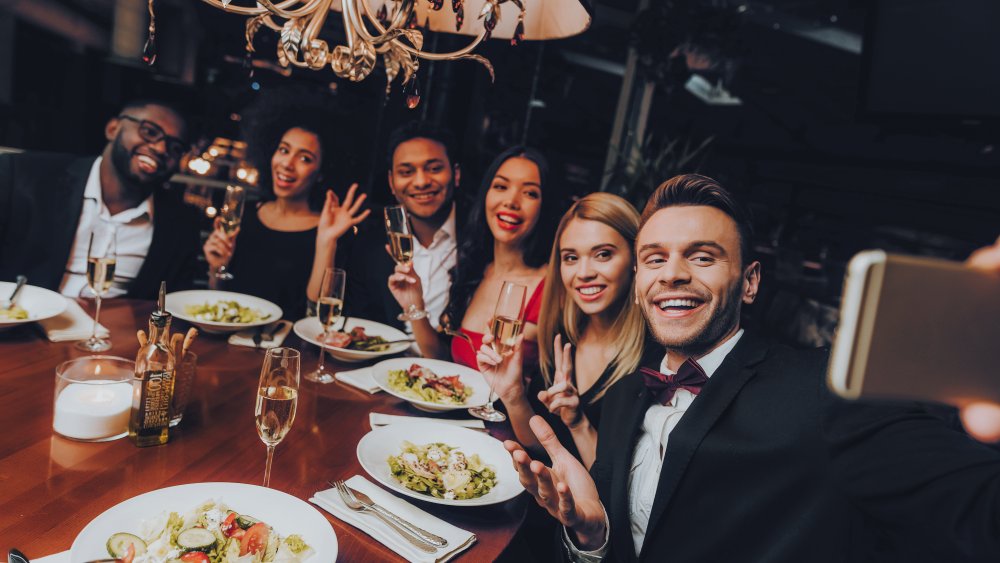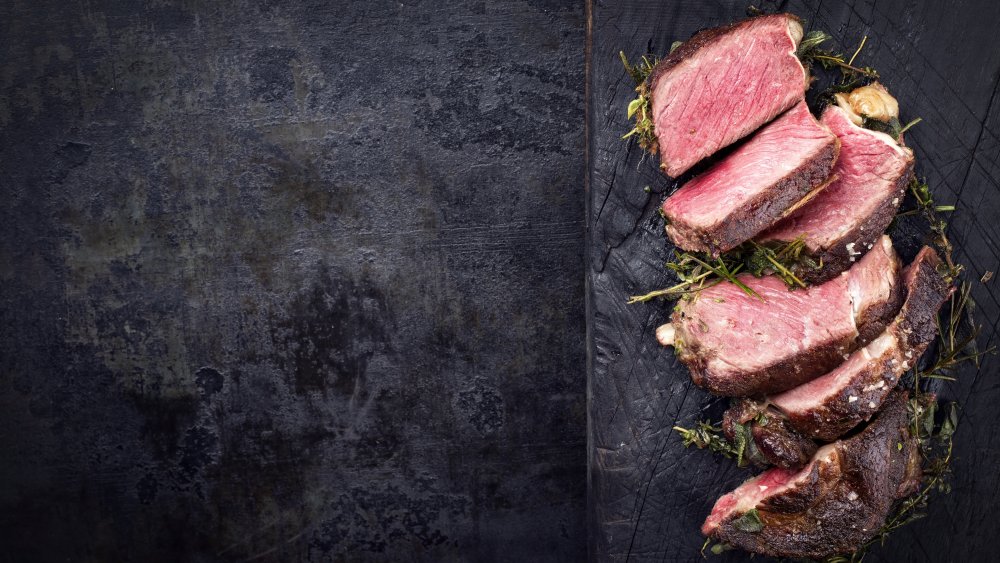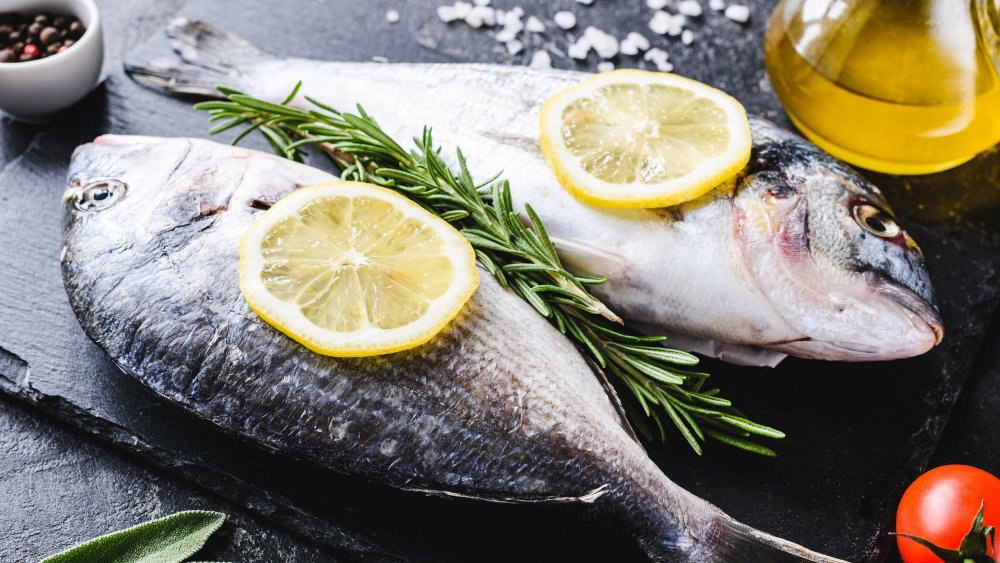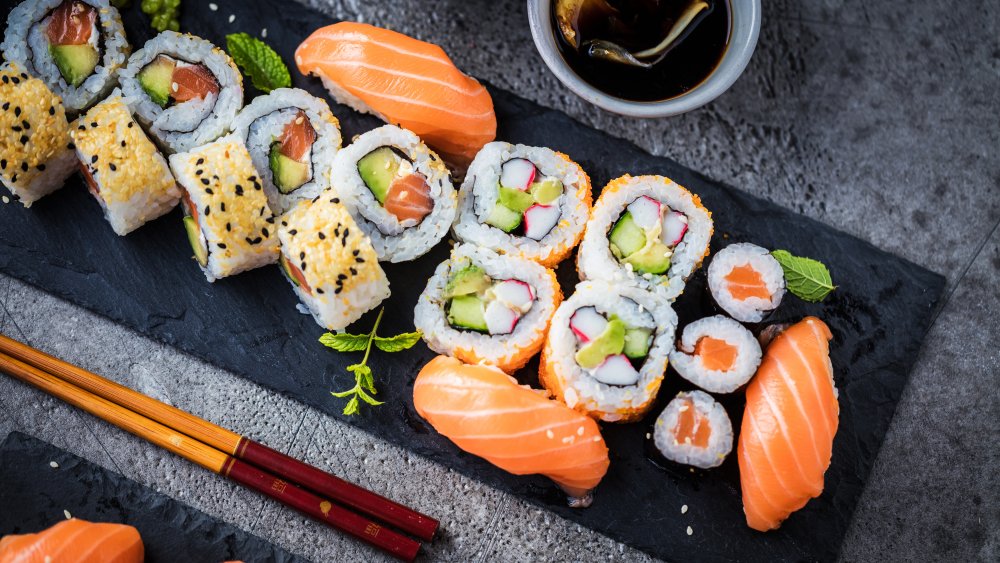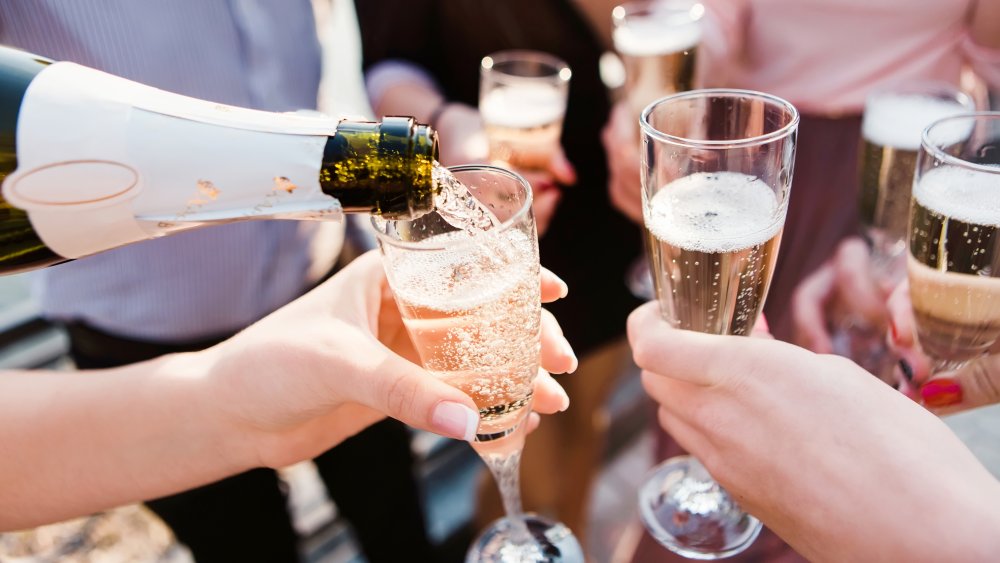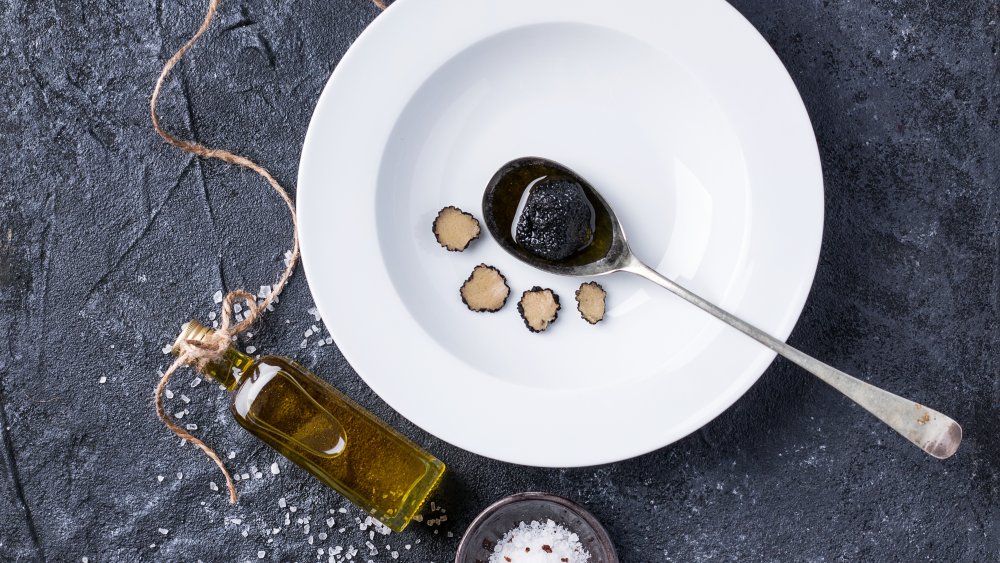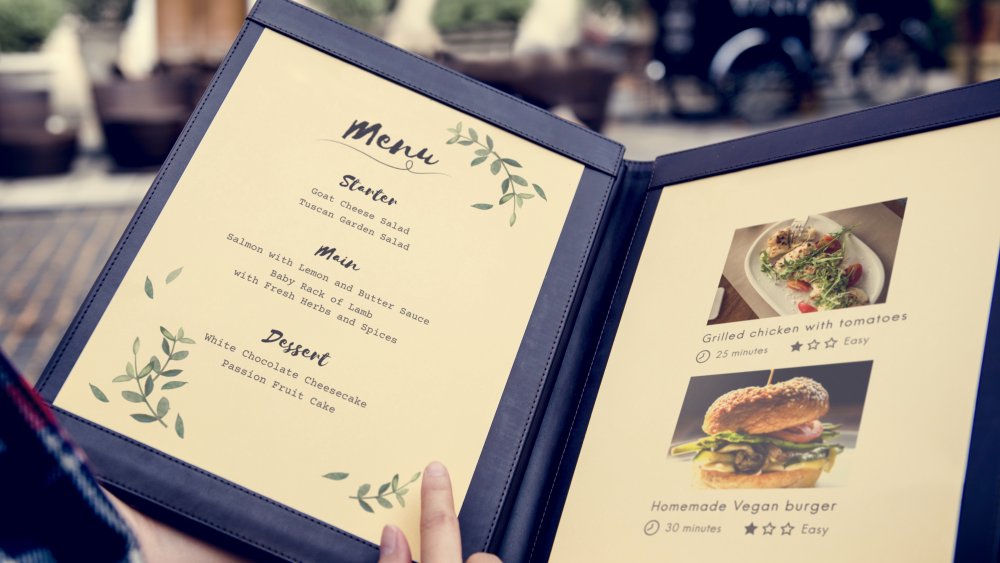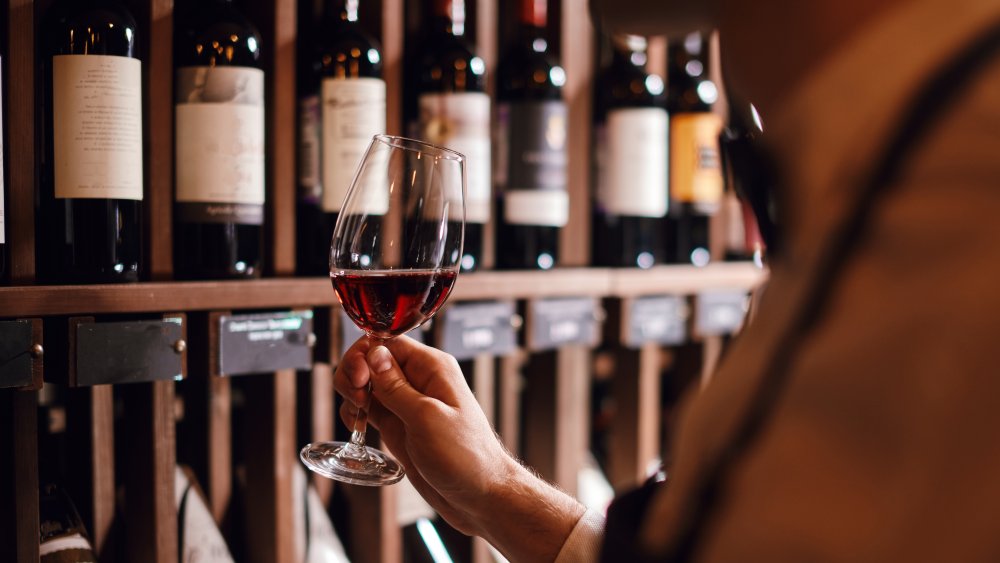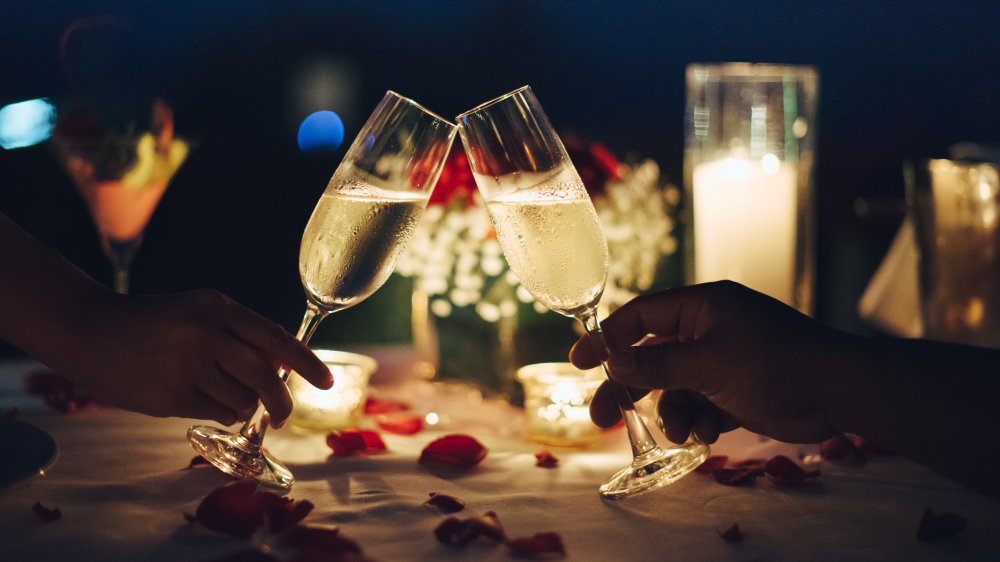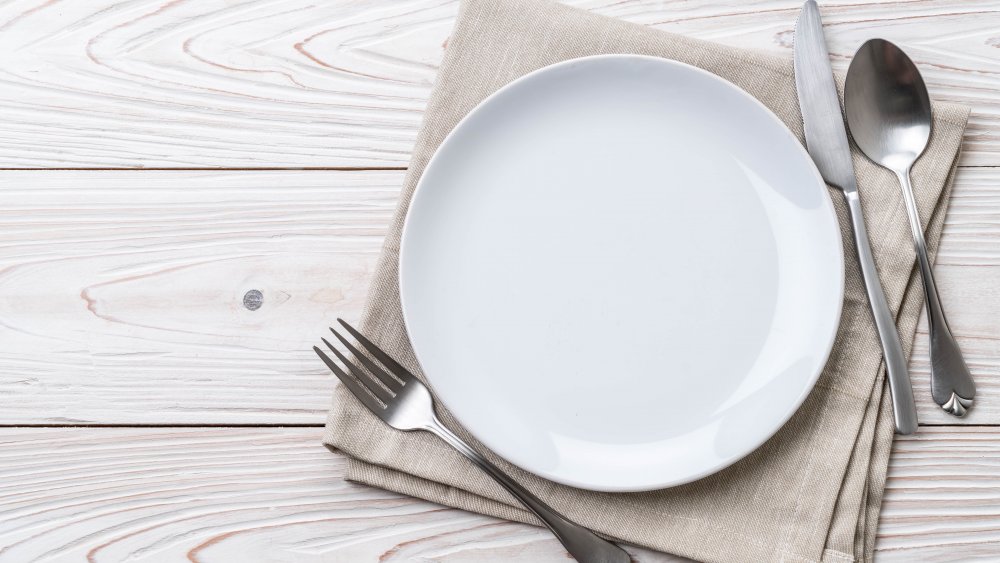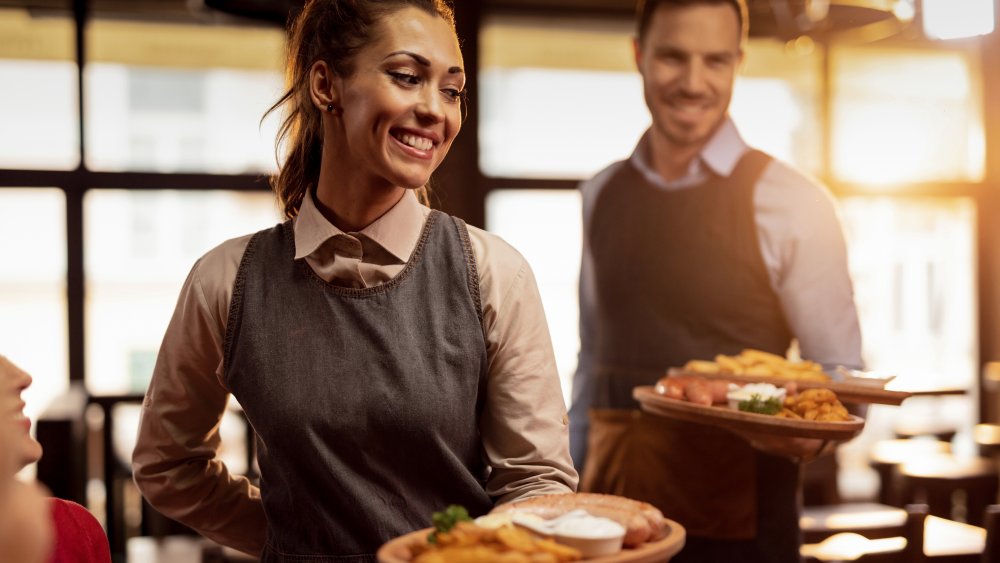Sneaky Ways Fancy Restaurants Are Scamming You
Who doesn't love a trip to a fancy restaurant? The food, the drink, the service, the atmosphere — it's got it all. The one downside, of course, is the price tag. We all know that the big bill is coming at the end of the dinner, and most of us are okay with it, knowing that the experience is worth it. Unfortunately, that's not always the case.
Even the best restaurants employ tricks and trades that unfairly part customers from their money. These can include passing an inferior product off as a high-quality dish, using psychological deceits in the menu, and creating the perfect atmosphere for diners to spend the most amount of money — classical music and all. Some of these practices are just to save the restaurant a dollar while others can be downright dangerous and can make people sick. Before you make reservations for that must-try upscale restaurant, read up on all the sneaky ways fancy restaurants are scamming you.
The Kobe beef isn't what it says it is
Kobe beef is very much a real — and delicious — thing. But unless the fancy restaurant you're dining at is located in Japan, the beef you're eating is almost certainly not Kobe. You see, this beef comes from one specific breed of Japanese cattle, called Kuroge Washu. It is one of four types of cattle that fall under the umbrella of Wagyu, widely considered the most decadent beef in the world. But even amongst other Wagyu cattle, the Kuroge Washu stands alone due to its speckled fat marbling inside the meat itself.
True Kobe beef must come from Japan. The local environment, methods, and expertise required to properly produce this meat can only be found in the Asian country. Because of the strict criteria, there is very little Kobe beef to go around. According to Business Insider, just 3,000 to 4,000 cattle a year make the cut as Kobe beef after slaughter and inspection.
It has become common practice in the U.S. to label any type of expensive meat as "Kobe." What you're most likely getting instead is Wagyu beef, which is still a prized piece of meat. But a Kobe steak is one of the most expensive cuts of meat in the world and when you order one but receive something of lesser quality, you're getting scammed out of some serious money.
Something about the expensive fish is a little fishy
Seafood is a popular and expensive food option that is the center of many fancy restaurants' menus. Unfortunately, it's one of the most fraud-laden food categories in the country. In a practice known as species substitution, a restaurant will claim to be offering an expensive fish, such as red snapper, which can cost more than $20 per pound. Instead, they'll serve you a different, less-expensive fish like tilapia, and pocket the difference. Although this type of fraud is committed at the grocery store as well, it's easier to get away with at restaurants. Here, the customer only sees and tastes the fish after it's been cooked, breaded, seasoned, covered in a sauce, or otherwise disguised.
A report done by Oceana found that fish was mislabeled at restaurants 38% of the time. According to the group, "more than 90 percent of the seafood consumed in the U.S. is imported, and less than one percent is inspected by the government specifically for fraud."
Not only is this practice scamming people out of money, but it can also be downright dangerous. The Oceana study found that fish on the FDA's "Do Not Eat" list for sensitive groups such as pregnant women and children because of their high mercury content were sold to customers who had ordered safer fish. Additionally, 84 percent of the white tuna sampled was actually escolar, an oily fish that can cause acute gastrointestinal symptoms.
All sorts of short cuts are taken with your sushi dinner
Now that we know of all the issues with fish labeling, let's take a closer look at the main type of eateries serving seafood: sushi restaurants. Not only do these venues mislabel fish (the Oceana study found that sushi restaurants mislabel 74% of the time), they also find other ways to cut corners.
John Daley, chef and owner of Sushi Ko in New York, told First We Feast about the ways sushi places rip you off. One easy trick is to push inside-out rolls, in which the fish is on the inside and the rice on the outside. "When rice is put on the outside, you can use more rice. Rice is cheaper than fish, so they put rice on the outside to fill you up," Daley said. "There's more rice and the filler uses less fish."
Some of the other highlights (or lowlights) include the use of spicy tuna, oils, and mayo to mask the flavor of rotting fish; using sushi scraps as tartar; and serving fake wasabi, which is essentially powdered mustard covered in horseradish.
The Champagne isn't what it says it is
Real Champagne is one of the most highly regulated foods or beverages on Earth. The title "Champagne" can only be given to sparkling wine that comes from the Champagne region of France. According to the governing body of Champagne, the grapes used to make this wine have characteristics, that because of the region's particular geography — soil, climate, etc — make them unique to the Champagne region. Strict adherence to the winemaking process ensures there are no bad bottles of Champagne in the world.
These rules are law in Europe and followed by most of the world, except in the United States. In the early 1900s, the Treaty of Versailles established that only sparkling wine from Champagne, France could in fact be called Champagne. However, although the United States signed the treaty, the Senate never ratified it. A 2006 trade agreement stated the U.S. would not allow new winemakers to describe their wine as Champagne, however, any producers already using the term were allowed to keep doing so.
A fancy restaurant will not likely try to pass off faux Champagne for the real thing if you order a bottle or even a glass. However, any cooked dish or cocktail mixed with the beverage might not be as good as it sounds.
Truffle oil isn't made of truffles
Truffle oil has become one of the buzziest food terms over the past few years. It's touted as a delectable elixir capable of elevating the taste of dishes. Restaurants will often charge a premium for the experience of consuming this added deliciousness, even jacking up the price of something as humble as the french fry.
But what exactly is truffle oil and why are we paying so much for it? The answer is disappointing. One would assume that truffle oil is infused with actual truffles. But these days, truffle oil contains no truffle at all. Instead, it is made of synthetic ingredients completely devoid of the earthy flavors of the real ingredients. The most commonly used ingredient is 2,4-dithiapentane, a type of formaldehyde.
According to Town & Country magazine, Michelin-starred chef Jean-Georges Vongerichten described truffle oil as "like gasoline" and "the most overrated ingredient." Meanwhile, a MasterChef contestant who used it found themselves on the receiving end of Gordon Ramsay's harsh criticism with the celebrity chef calling truffle oil, "One of the most pungent, ridiculous ingredients ever known to chefs."
When at a fancy restaurant, avoid dishes with truffle oil and opt instead for those containing real pieces of truffle.
The menu adjectives aren't accurate
Speaking of menus, another trick fancy restaurants like to employ is using overly descriptive language to describe their dishes. According to one study, descriptive menu labels raised sales by 27 percent. The problem with this technique is that most of those adjectives are meaningless if not completely inaccurate.
For example, a few years back, restaurants began describing their steaks and burgers as made from "Angus" beef after they found that people were willing to pay more when this adjective was used. The term is derived from Scottish Aberdeen Angus, a highly prized breed of cattle. However, the USDA defines Angus as beef coming from any cattle that is 50.01 percent or more black.
And when you see food as described from originating in a particular region, odds are that's not where it came from. The Tampa Bay Times researched every restaurant the paper had reviewed that made specific provenance claims and each one had faulty descriptions. The Florida blue crab was from the Indian Ocean, the wild Alaskan Pollock was farmed in China, fresh local salad greens were a month old from Mexico.
And don't forget about the ever-popular adjective "organic." The USDA regulates the term, but according to The New York Times, many restaurant suppliers and eateries add without proper approval. "This has been going on for as long as I've been cooking," chef Tom Colicchio told the newspaper. "When you start really getting into this stuff, there's so many things people mislabel."
There are even more menu tricks
One common trick used by upscale restaurants is to remove the dollar signs from menus, leaving just the numerical price of the dish. A study done by the Cornell University School of Hotel Management found that diners spent significantly more money when given a menu without dollar signs. Even if the word "dollar" was spelled out, it caused customers to spend less. Researchers concluded that any references to dollars, "reminds people of the pain of paying."
Restaurants also like to bait diners into purchasing expensive dishes by framing them as bargains. There are a few ways of accomplishing this. One is by including certain items that can be shockingly expensive. Restaurants know that most guests will never order these dishes. But by putting other pricey, but not astronomically so, items nearby on the menu, they appear to be a bargain even if they are in fact very overpriced.
Fancy restaurants also reel in diners with something known as bracketing. This is when eateries offer the same dish in two different sizes. The guest doesn't know how much less food comes in the smaller portion. Naturally, they tend to order the smaller, less-expensive option believing it to be the better offer. Yet this is the size the restaurant wanted to sell and the price it wanted to charge.
Fancy restaurants markup the price of wine
We all know that restaurants can have high markups on their food and drink. It's how they make money. But some markups seem downright astronomical. Nowhere is this better seen than on the wine list. A bottle of wine can easily cost three or four times more at a restaurant than what they paid for it. Wine by the glass is even worse. Often, the price of a single glass is what the restaurant spent for the whole bottle.
Restaurants are able to do this because they know they have you. If you've decided you want to have a glass or two of wine at dinner, odds are you're going to. Nobody ever felt an overwhelming urge to get that second glass of sparkling water. According to Newsweek, whereas prepared food takes time, wine is a prepackaged item and all the restaurant has to do is open and serve it. They often choose to charge up to four times more than what they paid for it, simply because they can.
Fancy restaurants set the mood for customers to spend more
Fancy restaurants know that most of their customers are coming there to spend money. But that doesn't mean they're not going to set the stage for their diners to fork over as much as possible. Upscale restaurants are prone to trying to create a mood for customers to spend a few extra dollars. As researchers at the University of Leicester discovered, one way of doing this is by playing some classical music.
Dr. Adrian North, senior lecturer in psychology at the university, said, "When you hear a piece of music it activates all types of knowledge. If you hear classical music, it has got all sorts of connotations of sophistication, affluence, and wealth and it makes you feel a bit posh. "In a restaurant, this has the effect of making you spend a bit more money. Where people were really spending the money was on the luxury items, such as starters, desserts, and coffees."
Fancy restaurants may use smaller dinnerware
An easy way to lower your food costs is to serve less food in each dish. That, of course, would mean you'd have to charge less. But what if customers didn't know they were getting less?
To accomplish this, restaurants use a little optical illusion: slightly smaller plates. According to The Guardian, this is because when the price of food does eventually rise, a restaurant can scale down from a 12-inch plate to an 11-inch plate and customers won't even notice. Even if the restaurant serves the same amount of food, using a smaller plate makes a consumer feel they are getting more food. Then restaurants can charge more for the same dish under the illusion they're providing more food.
It's not just plates, but glasses are getting smaller as well. It's been a long-time practice for restaurants to serve a "pint" of beer in glasses holding 14 ounces, two ounces short of an actual pint. The glass looks just like a true 16-ounce glass but will usually have thicker walls or bottoms. Although certain segments of the population have taken umbrage with the practice, it's a scam most people don't even realize they're being subjected to.
Servers may have incentives at fancy restaurants
The art of the upsell isn't new to anyone. Most people believe that the waiter is simply trying to build a larger check and hopefully get a larger tip. But there's usually an even greater prize awaiting them.
Restaurants will often tell their waiters to prioritize selling certain dishes or specials. It could be because the food is close to going bad or the restaurant has a big markup on an item. Whatever the reasons, waiters will commonly earn incentives if they sell a certain number of items or the most amongst all the servers. The prize can include a cash bonus or other type of reward.
When ordering at a fancy restaurant, your server may recommend a particular dish, giving it rave reviews. However, their main goal is just to get another tally in their column. Be wary of any server that seems to be a little too much in love with the Branzino.
